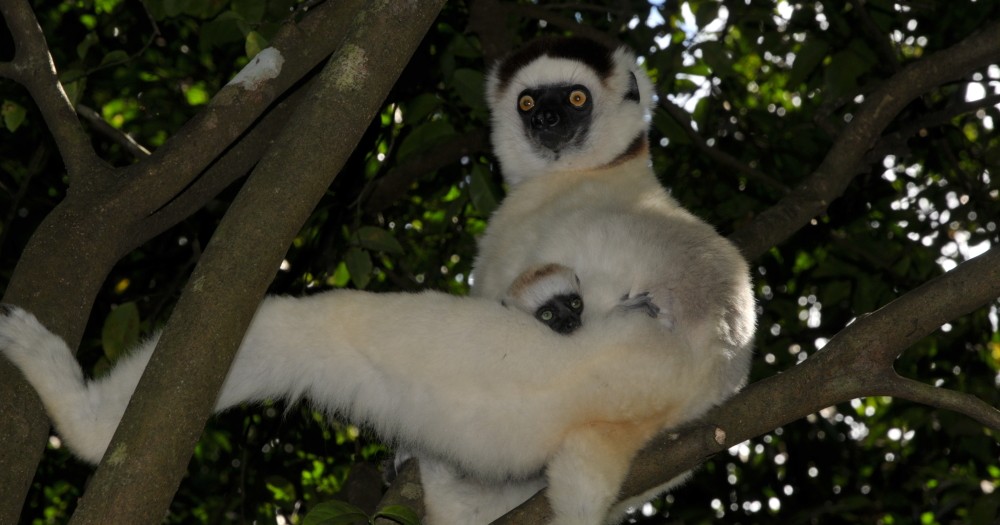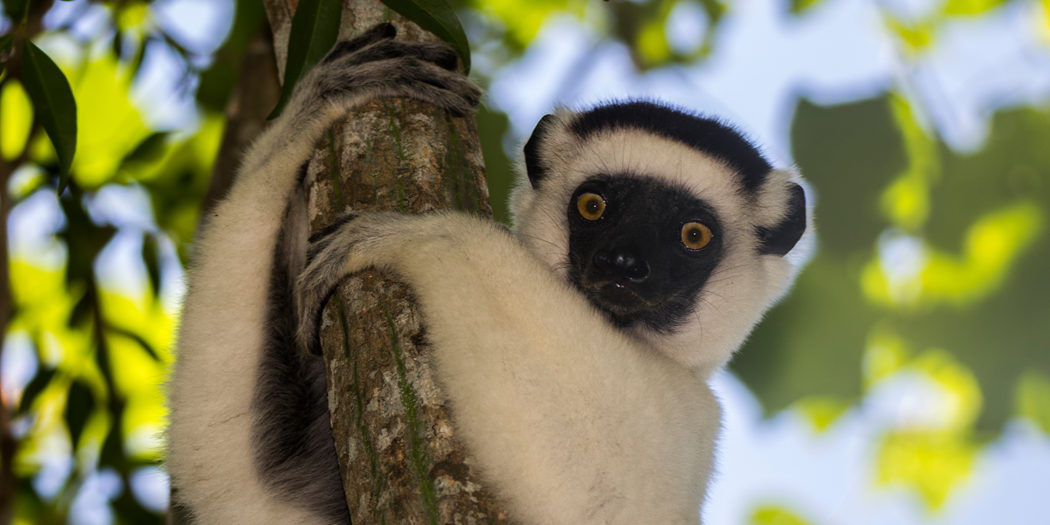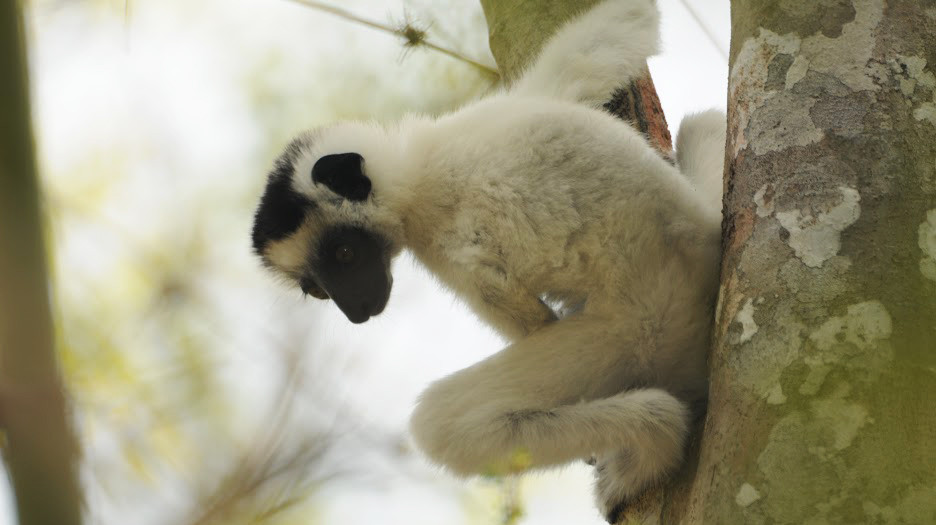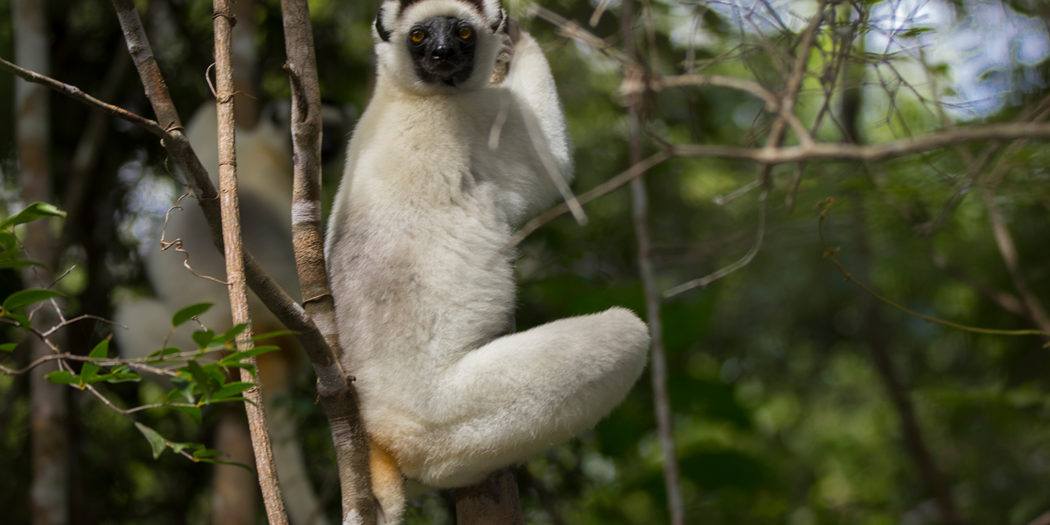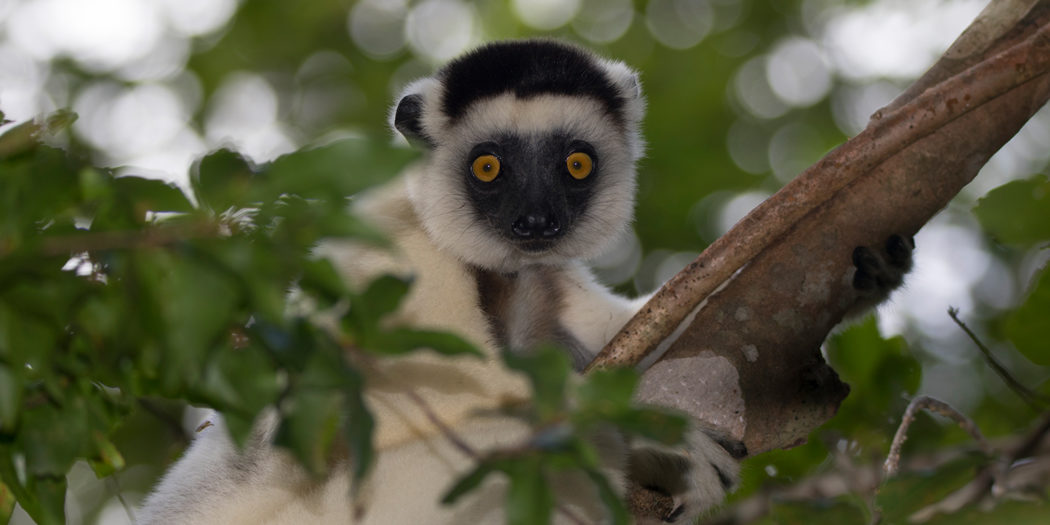The Verreaux’ Sifakas (Propithecus verreauxi) lives in the south of Madagascar and belongs to the few lemurs that successfully colonize the hot and hostile spiny forests. It is a very adaptable species that can survive even in very small forest areas. It can even be found in some lowland rainforests in the southeast of the eighth continent. In the northwest, the distribution area of Verreaux’ Sifakas is limited by Tsiribinha, a large river.
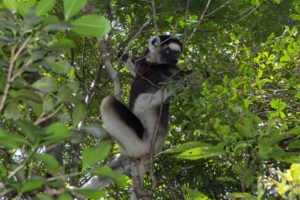
In the southeast of the large island they occur up to the spiny forests of Mangatsiaka in the Andohahela National Park. In between are the national parks Isalo, Tsimanampetsotsa, Kirindy-Mitea, Zombitse-Vohibasia and the reserves Andranomena, Kirindy and Beza-Mahafaly. In addition, Verreaux’ Sifakas groups exist in the private nature reserves of Analabe and Berenty as well as in many smaller, unprotected habitats. Although not originally present there, they were successfully settled privately in Nahampoana.
A full-grown Verreaux’ Sifaka has a body length of 42 to 45 cm, whereby the tail constitutes additional up to 60 cm. The average body weight is 3.5 kg with a few 100 grams difference between the sexes. Verreaux’ Sifakas are easily distinguishable from other lemurs by their white, dense fur with brown markings on the head. A few individuals are almost completely white. Very similar to them is the Coquerel’s Sifaka, which used to be considered the same species. With the Coquerel’s Sifakas, however, the brown fur reaches up over chest and belly, whereby one can keep the two types easily apart.
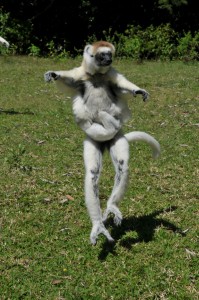
Verreaux’ Sifaka adapt all their habits to the heat of the south. They use the cooler early morning hours and the late afternoon to find food to rest for the rest of the day. The menu is mainly made up of leaves. When the dry and spiny forests bloom and turn green for a moment in the short rainy season starting in November, the Verreaux’ Sifakas take advantage of the rich food supply and feed themselves with fruits and flowers. The offer is supplemented by seeds, seldomly bark, deadwood and termite soil. Verreaux’ Sifakas are playful, social animals that live in groups of two to 14 individuals. In contrast to other species, they have harem-like structures. As with almost all lemurs, there are always females as leaders. Each group lives in an area of about 0.04 to 0.2 km², but the borders are rarely defended and usually overlap with areas of other groups. Reasons for disputes are rather valuable sources of food in the barren landscape.
Females become sexually mature with approximately three to five years and can be mated by their sexual partners in a very short time, one assumes only few days in January. Males with high testosterone levels use their chest glands to attract females. Males that do not have the typical chest spot and are therefore less attractive swap sex for more pronounced grooming.
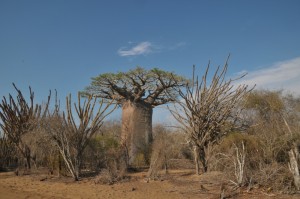
After a gestation period of about 165 days, a single young animal is born in June or August. The Verreaux’ Sifaka young spends the first two months on the mother’s belly, then climbs onto her back and dares the first excursions into the surroundings from time to time. With half a year, young Verreaux’ Sifakas are independent of their parents. Males leave their groups with sexual maturity, females less frequently. Verreaux’ Sifaka can live to be around 20 years old, some sources even speak of more than 25 years.
The Verreaux’ Sifaka on Madagascar are known for their jumping walk on two legs. This fame is probably mainly due to the private nature reserve Berenty, where Verreaux’ Sifaka are tamed by hand and lured from guide to guide for the visitors on the red ground with food. The typical photos of the “dancing Verreaux’ Sifaka” on red soil are all taken this way. Often you can see Verreaux’ Sifaka in their natural environment sitting on warm stones while sunbathing in the morning, cross-legged with outstretched arms, hands resting on thighs. Like most lemurs, Verreaux’ Sifaka move around in the treetops by leaping and climbing; experienced and skilled animals can jump a good ten metres.
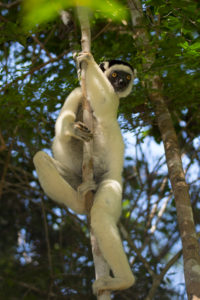
Since 2018, Madagascar’s Verreaux’ Sifakas have been on the IUCN red list as critically endangered. They prefer habitats with large trees of more than 5 cm trunk diameter and especially the plant Alluaudia procera (which is not actually a cactus but belongs to the Didiereaceae). It is a shrub up to 15 m tall with a crown of vertical, octopus-poor shoots, covered with many small, water-storing leaves and just as many thorns. Habitats without this special plant are not populated by Verreaux’ Sifakas. The individual habitats of the Verreaux’ Sifakas have been strongly reduced in the meantime by slash-and-burn for agriculture or pastures as well as mining. The Sakalava people and non-native travellers hunt the Sifakas for consumption, while the Antandroy and Mahafaly tribes consider them fady (taboo). Currently there is still a population of up to 500 animals per km² in the most densely populated area of Verreaux’ Sifakas, Anstersanomby. In the last 50 years, however, the total population has declined by more than half due to the massive loss of habitat – a disturbing trend. If things continue like this, the species will be seriously threatened with extinction within the next decades, following the fate of the Silky Sifaka and its Black Sifaka counterpart.
 MADAMAGAZINE Your Magazine about Madagascar
MADAMAGAZINE Your Magazine about Madagascar
